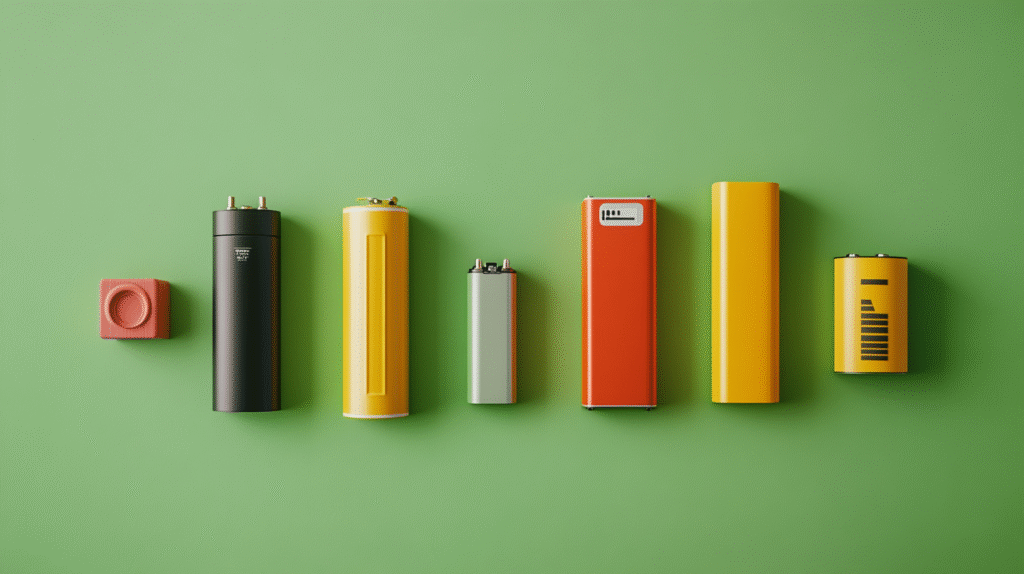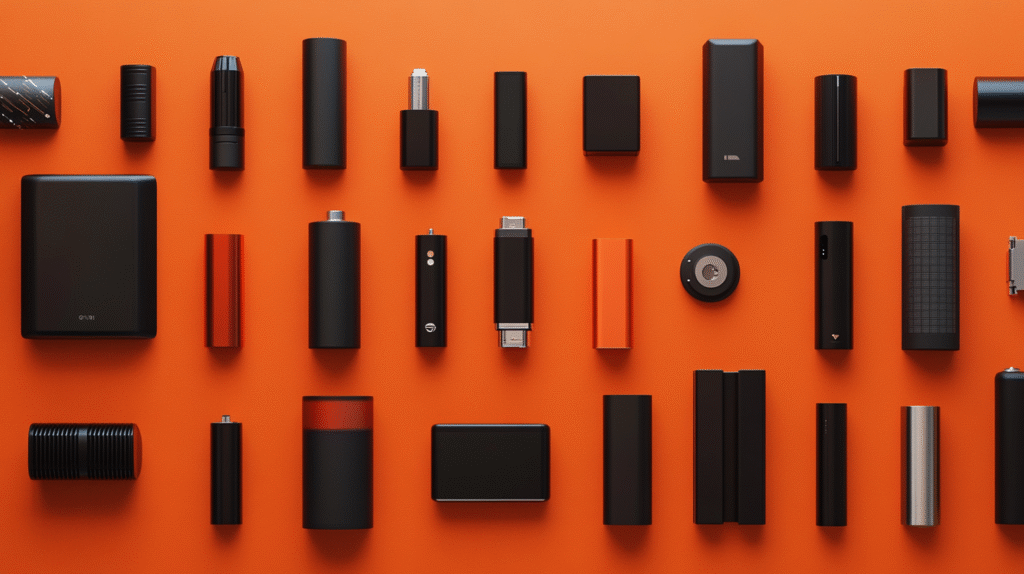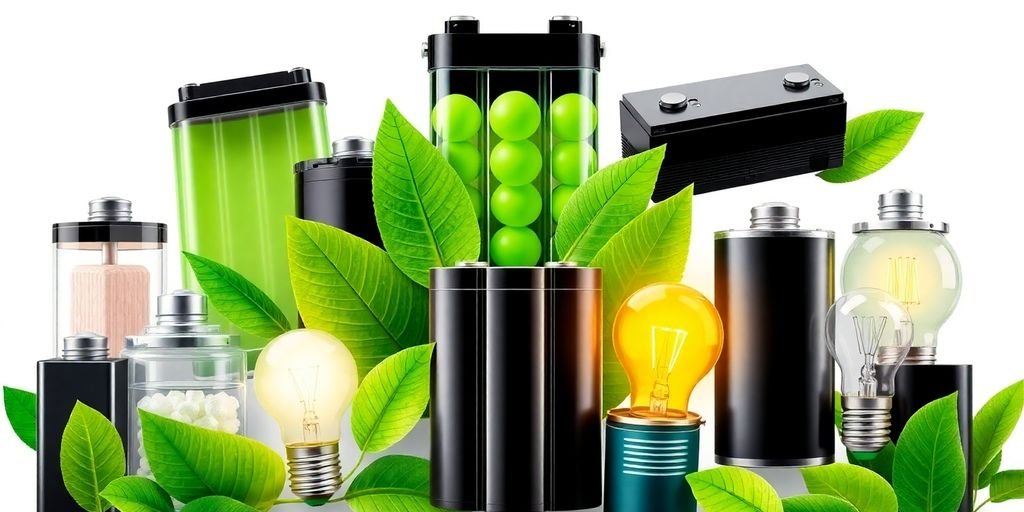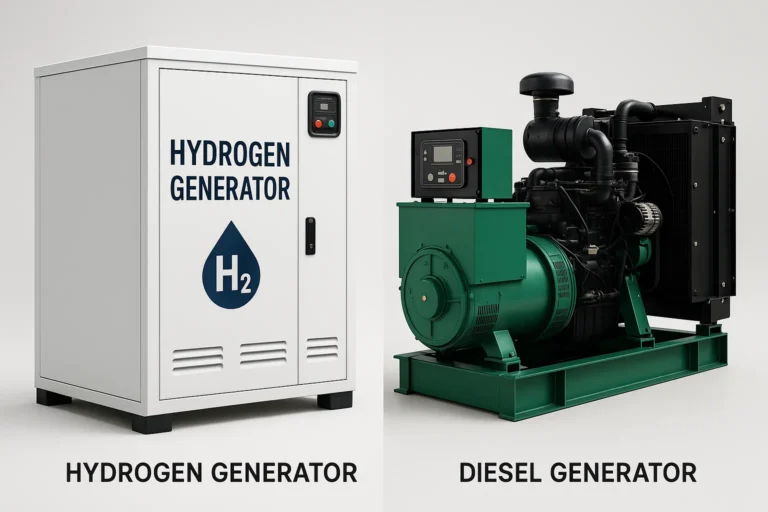New Battery Types You Need to Know: Innovations Driving Sustainability
As the world shifts towards greener energy solutions, the quest for better battery technology has never been more pressing. With electric vehicles (EVs) and renewable energy sources on the rise, we need batteries that are not only efficient but also sustainable. Traditional lithium-ion batteries have served us well, but they come with a host of challenges, including resource scarcity and environmental concerns. Luckily, new battery types are emerging that could change the game and help us meet our sustainability goals.
Key Takeaways
- Solid-state batteries could revolutionize electric vehicles with faster charging and improved safety.
- Sodium-ion batteries offer a cost-effective and sustainable alternative to lithium-ion batteries.
- Flow batteries are gaining attention for their potential in large-scale energy storage solutions.
- Zinc-air batteries might provide high energy density for various applications, including portable devices.
- Innovations in battery recycling are essential for creating a circular economy in battery production.

Introduction: The Urgent Need for Battery Innovation
Let’s be real, we’re at a point where better batteries aren’t just a nice-to-have, they’re a must-have. Think about it: electric cars, storing solar and wind power, even our phones – they all live and die by their batteries. And the current tech? It’s just not cutting it anymore. We need batteries that last longer, charge faster, and don’t rely on materials that are going to run out or cause environmental nightmares. The push for sustainability is a huge driver.
The demand for energy is only going up, and if we want to power our world without cooking the planet, we need to get serious about battery innovation. It’s not just about making things more convenient; it’s about building a future that’s actually, well, sustainable.
Here’s why we’re in such a hurry:
- Environmental Concerns: Mining for lithium and cobalt, key ingredients in today’s batteries, can be pretty damaging. We need to find alternatives that are easier on the Earth. eco-friendly ways are being sought after.
- Resource Scarcity: Some of the materials we use now are rare and unevenly distributed. That means prices can spike, and some countries have more access than others. Diversifying our battery chemistry is key.
- Performance Limitations: Let’s face it, waiting hours for your EV to charge or constantly hunting for an outlet for your phone is a pain. We need batteries that can keep up with our lives.
Beyond Lithium-Ion: Emerging Battery Technologies
Lithium-ion batteries have been the go-to for years, but they aren’t perfect. Safety concerns and the sustainability of materials are driving the search for better options. Luckily, there are some promising Emerging battery technologies for sustainability on the horizon.
Solid-State Batteries: The Future of EV Power?
Solid-state batteries are gaining a lot of attention. They replace the liquid electrolyte with a solid material, like ceramic. This could mean faster charging, longer lifespans, and improved safety. Plus, they might reduce our need for rare materials. EV developments are exciting.
Sodium-Ion Batteries: A Sustainable Alternative?
Sodium-ion batteries are looking like a good bet for cheaper, more sustainable energy storage. Sodium is way more abundant than lithium, which could bring down costs and reduce environmental impact. They might not pack as much energy as lithium-ion, but they’re great for applications where energy density isn’t the biggest deal. Here’s a quick comparison:
| Feature | Lithium-Ion | Sodium-Ion |
|---|---|---|
| Energy Density | High | Moderate |
| Material Cost | High | Low |
| Sustainability | Moderate | High |
| Resource Abundance | Limited | Abundant |
Flow Batteries: Ideal for Grid-Scale Storage?
Flow batteries are different. They store energy in external tanks of liquid electrolytes. This means you can scale up the energy capacity just by using bigger tanks. They’re perfect for grid-scale storage, helping to balance out the intermittent nature of renewable energy sources like solar and wind. Think of them as giant, rechargeable liquid fuel cells. These are emerging battery chemistries for clean energy storage.
Zinc-Air Batteries: High Energy Density Potential
Zinc-air batteries use zinc and oxygen from the air to create electricity. They have the potential for very high energy density, which is great. However, they’ve had some challenges with rechargeability and lifespan. But, ongoing research is trying to solve these problems, making them a contender for future energy storage solutions. There are many next-generation solar battery innovations being developed.
The push for new battery tech isn’t just about making things better; it’s about making them sustainable. We need batteries that are safe, affordable, and made from materials that won’t run out or harm the planet. The future depends on it.

Applications of New Battery Types
Electric Vehicles: Faster Charging, Longer Range
Electric vehicles stand to gain a lot from new battery tech. Imagine charging your car in minutes and driving hundreds of miles further on a single charge. Solid-state batteries, for example, promise higher energy density and improved safety, which translates directly into longer ranges and reduced fire risk. New battery chemistries are also being explored to reduce reliance on scarce materials.
Renewable Energy Storage: Stabilizing the Grid
Renewable energy sources like solar and wind are intermittent. Batteries are needed to store energy when it’s abundant and release it when it’s needed. Flow batteries, with their scalable capacity, are emerging as a strong contender for grid-scale storage. They can help balance the grid and ensure a reliable power supply, even when the sun isn’t shining or the wind isn’t blowing. Sustainability is key here.
Portable Electronics: Extended Battery Life
From smartphones to laptops, we rely on portable electronics. New battery technologies can significantly extend the battery life of these devices. Imagine a phone that lasts for days on a single charge or a laptop that doesn’t need to be plugged in all the time. This is where zinc-air batteries and other high-energy-density options come into play. Plus, the development of new eco-friendly battery types for electric vehicles is also influencing the portable electronics sector, driving innovation in smaller, more efficient power sources.
The shift towards more sustainable battery options for off-grid living is also gaining momentum. People are looking for ways to power their homes and communities with renewable energy, and advanced battery technologies are making this possible. This includes everything from home energy storage systems to community microgrids, all powered by cleaner, more efficient batteries.
Challenges and Opportunities in Battery Development

Developing new battery tech isn’t all smooth sailing. There are definitely some hurdles to jump, but also some pretty cool opportunities if we can get it right.
Challenges Facing New Battery Technologies
One of the biggest challenges is cost. New battery chemistries, like sodium-ion batteries, can be expensive to produce at scale. We need to find ways to bring those costs down to make them competitive with existing lithium-ion options. Then there’s the issue of raw materials. Some of these new batteries rely on materials that are scarce or come from places with questionable labor practices. Finding sustainable and ethical sources is a must.
Another challenge is performance. Some of these new batteries might have great energy density, but they might not last as long or charge as quickly as lithium-ion. Improving the performance and lifespan of these batteries is key to making them a viable alternative. Safety is also a big concern. We need to make sure these batteries are safe to use in EVs, grid storage, and other applications.
Despite these challenges, there are some huge opportunities in battery development. The demand for batteries is only going to grow as we move towards electric vehicles and renewable energy. Companies that can develop better, cheaper, and more sustainable batteries will be in a great position. Plus, there’s a lot of room for innovation in this field. We’re seeing new battery chemistries, new manufacturing processes, and new ways to recycle batteries. It’s an exciting time to be working in the battery industry.
Challenges and Opportunities
Here’s a quick look at some of the key challenges and opportunities:
- Challenges:
- High production costs
- Raw material scarcity and ethical sourcing
- Performance limitations (lifespan, charging speed)
- Safety concerns
- Opportunities:
- Growing demand for batteries
- Potential for cost reduction through innovation
- Development of more sustainable and ethical supply chains
- Advancements in battery performance and safety
Overcoming these challenges and seizing these opportunities will be crucial for creating a sustainable energy future. The expansion of US battery manufacturing is a key step in this direction, promising to address current limitations and drive industry growth.
Here’s a table summarizing the potential of different battery technologies:
| Battery Type | Potential Advantages | Current Challenges |
|---|---|---|
| Solid-State | Higher energy density, improved safety | High cost, manufacturing difficulties |
| Sodium-Ion | Lower cost, abundant materials | Lower energy density, shorter lifespan |
| Zinc-Air | High energy density, low cost | Limited cycle life, complex recharging process |
| Lithium-Sulfur | Very high energy density, low material cost | Short lifespan, safety concerns |
| Flow Batteries | Long lifespan, scalable | Low energy density, complex system |
Conclusion: A Sustainable Future Powered by Innovation

It’s pretty clear that we’re on the cusp of a battery revolution. The innovations we’ve talked about – solid-state, sodium-ion, flow batteries, and zinc-air – aren’t just incremental improvements; they’re potential game-changers. They promise to address some of the biggest challenges we face in creating a sustainable energy future. Think about it: longer-lasting batteries for our devices, more efficient energy storage for the grid, and EVs that can go further on a single charge. It’s all within reach.
The shift towards these new battery technologies isn’t just about convenience or better performance. It’s about reducing our reliance on scarce resources, minimizing environmental impact, and building a more resilient energy infrastructure. It’s about creating a future where clean energy is accessible to everyone.
Here’s what I think are the key takeaways:
- Diversification is key. We can’t rely solely on lithium-ion anymore. Exploring different chemistries and materials is crucial for a stable and sustainable supply chain.
- Recycling is becoming more important than ever. As lithium-ion battery recycling becomes more widespread, we need to make sure we’re recovering valuable materials and reducing waste.
- Collaboration is essential. Scientists, engineers, policymakers, and businesses need to work together to accelerate the development and deployment of these new technologies.
The future of energy storage is bright, but it requires continued investment, research, and a commitment to sustainability.

Wrapping It Up: The Future of Battery Technology
In summary, the future of battery technology looks pretty exciting. With innovations like solid-state and sodium-ion batteries on the horizon, we’re moving towards safer, more efficient, and sustainable options. These new types of batteries could change the game for electric vehicles and renewable energy storage. As companies work to make these technologies mainstream, we can expect to see a shift in how we think about energy. It’s all about making our world greener and more efficient. So, keep an eye on these developments—they might just power the future!
Frequently Asked Questions
What are solid-state batteries?
Solid-state batteries use a solid material instead of liquid for their electrolyte. This makes them safer and allows them to charge faster and last longer than regular lithium-ion batteries.
Why are sodium-ion batteries considered sustainable?
Sodium-ion batteries are cheaper and use sodium, which is easy to find and not rare like lithium. This means they are better for the environment.
How do flow batteries work?
Flow batteries store energy in liquid electrolytes that flow through the system. This makes them great for large-scale energy storage, like keeping power from solar or wind energy.
What are zinc-air batteries?
Zinc-air batteries use oxygen from the air to create energy. They have a high energy density, which means they can store a lot of energy in a small space.
What challenges do new battery technologies face?
New battery technologies need to overcome issues like cost, safety, and how well they can perform over time. Researchers are working hard to solve these problems.
How will new batteries impact electric vehicles?
New battery types promise to make electric vehicles faster to charge and give them a longer driving range, making them more convenient for users.









4 Comments